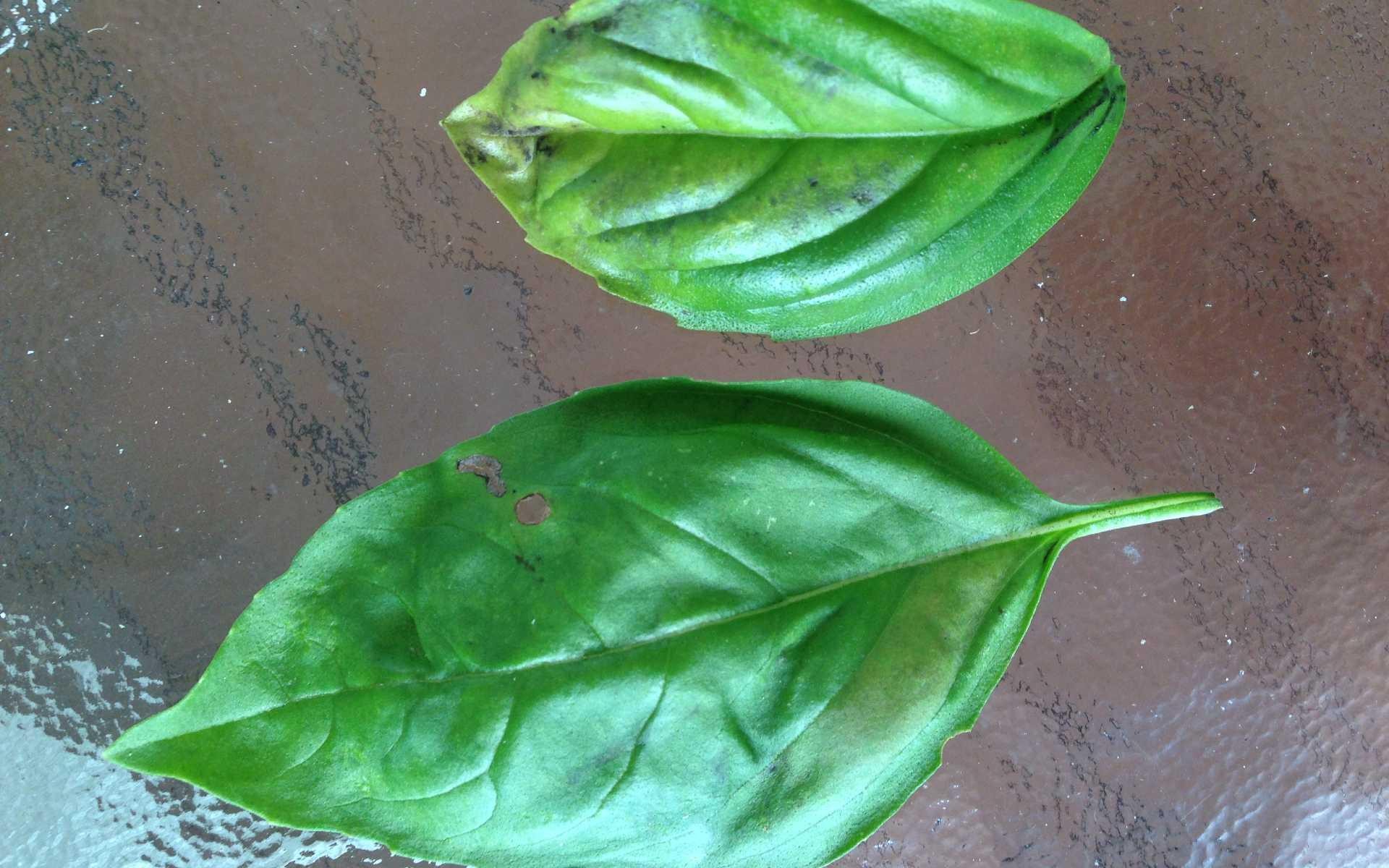
Basil fungus
Leaf yellowing is the most noticeable symptom on basil infected with basil downy mildew. This disease was first detected in Florida in 2007. Beginning in 2008 there were a number of infections reported in the eastern US and has infected basil in subsequent years. It was found in greenhouse, home, and field-grown basil.
Below are photos showing the early symptoms of this fungal disease on the top and bottom sides of basil leaves.


Management of downy mildew on basil
Plant resistant basil varieties such as 'Obsession', 'Devotion', 'Prospera', and 'Amazel' (propagated from cuttings) to help prevent the disease. Seeds can be ordered from some online vegetable seed and plant suppliers.
Monitor your plants closely for symptoms and be prepared to pull out, bag up, and throw out infected plants. It is safe to eat leaves from infected plants- the disease does not harm people. If you lose plants to downy mildew you can sow fresh seeds in containers or in another part of your garden.
Warm, wet, humid weather encourages the spread of downy mildew. Plant basil in full sun locations and don’t crowd your plants. Good air circulation around plants can help reduce the risk of infection.
Additional resources
Basil Bounces Back With Downy Mildew Resistant Cultivars - Maryland Grows Blog - February 2020
Basil Downy Mildew | Cornell University
Still have a question? Contact us at Ask Extension.
